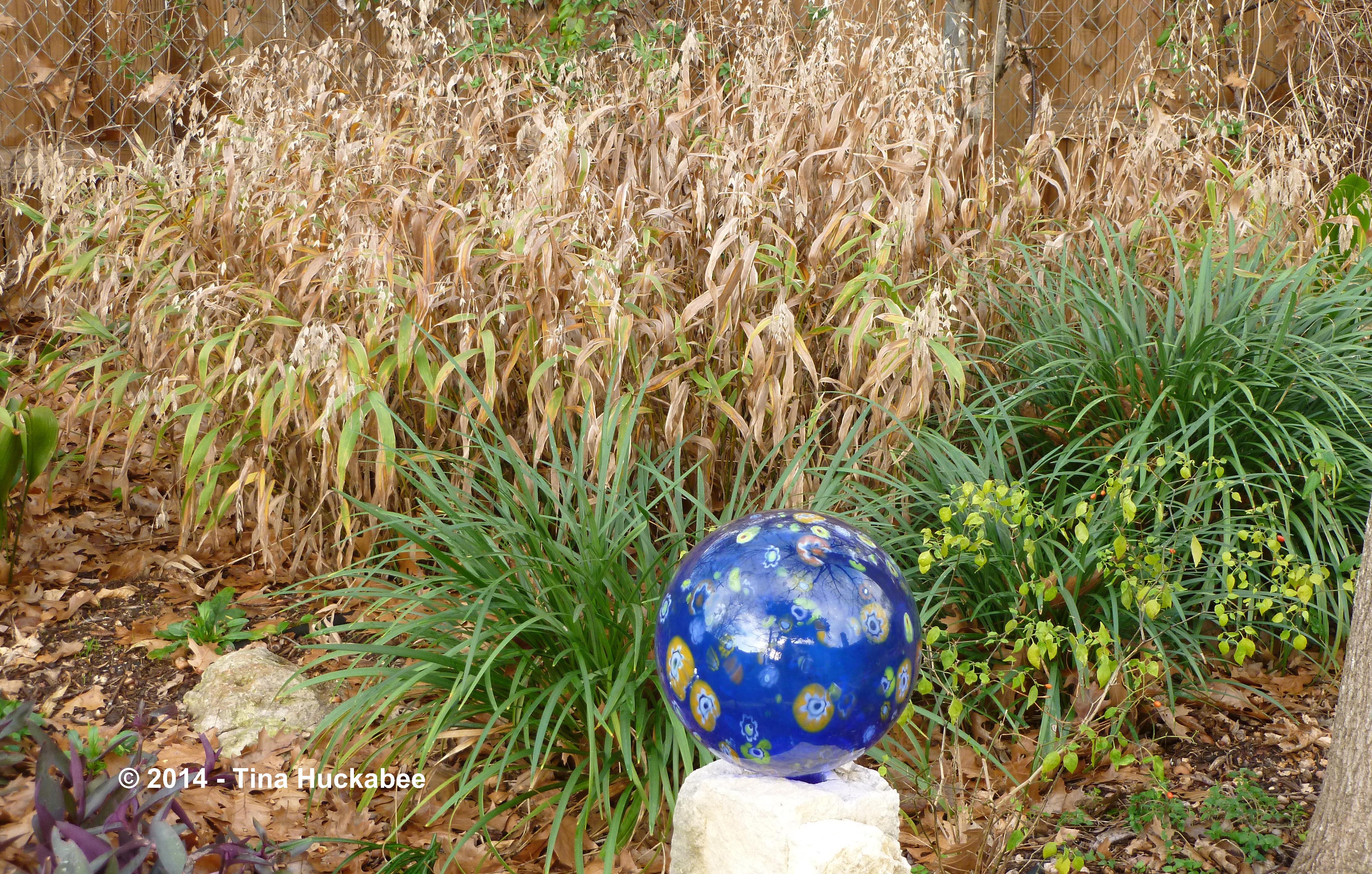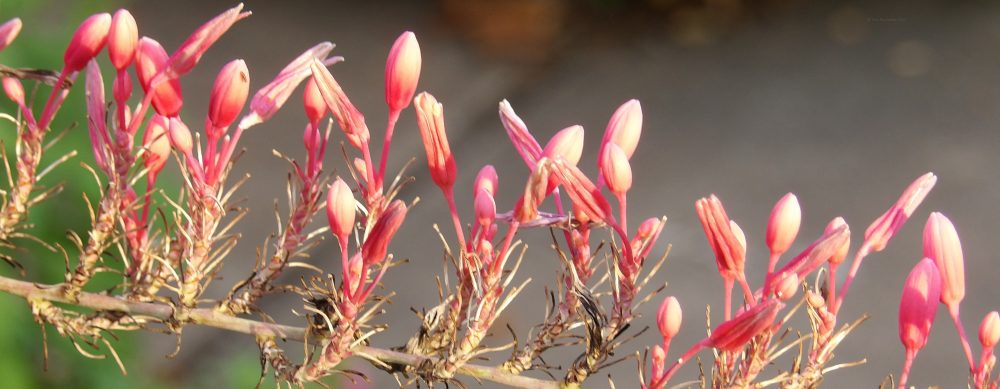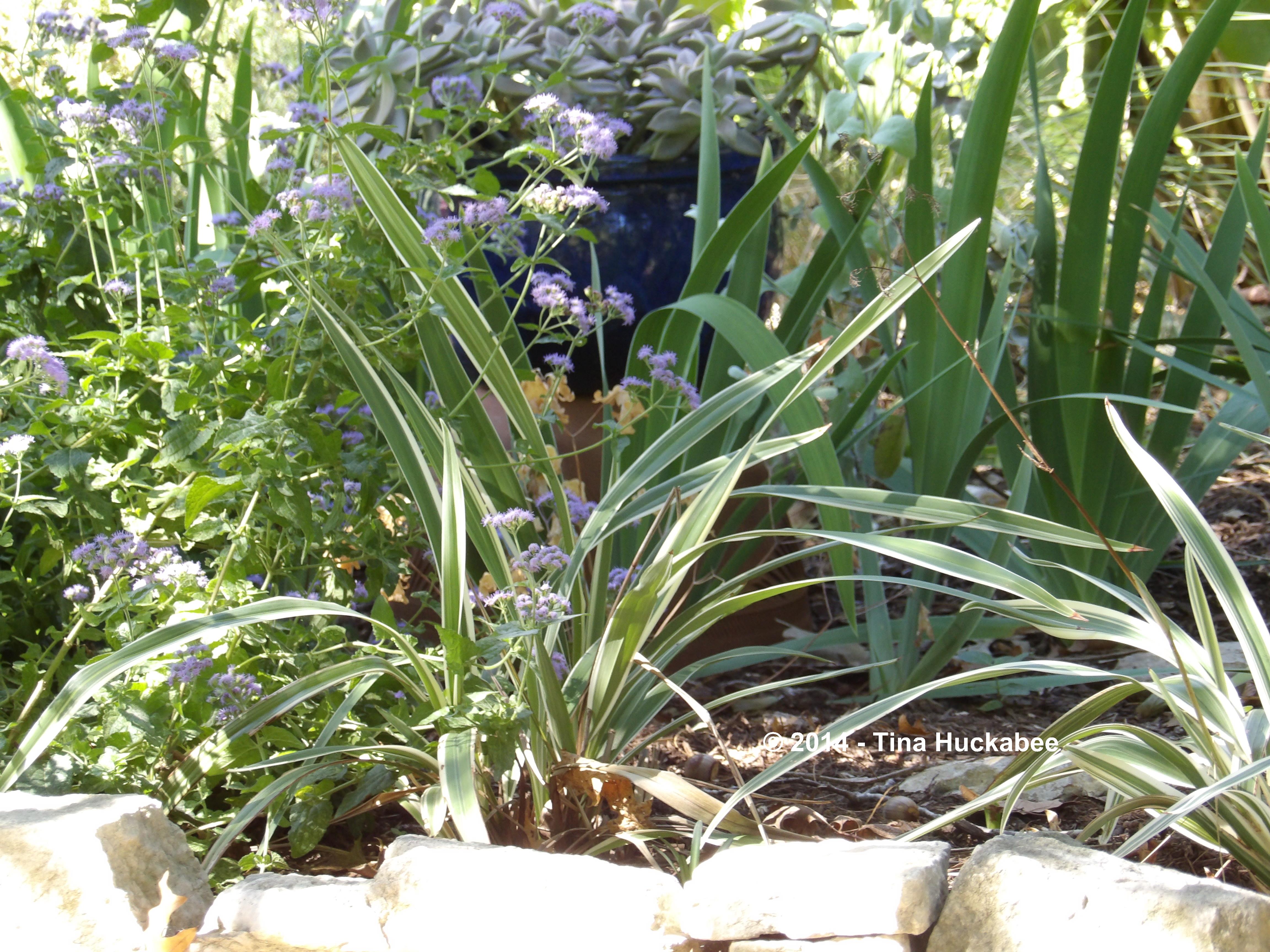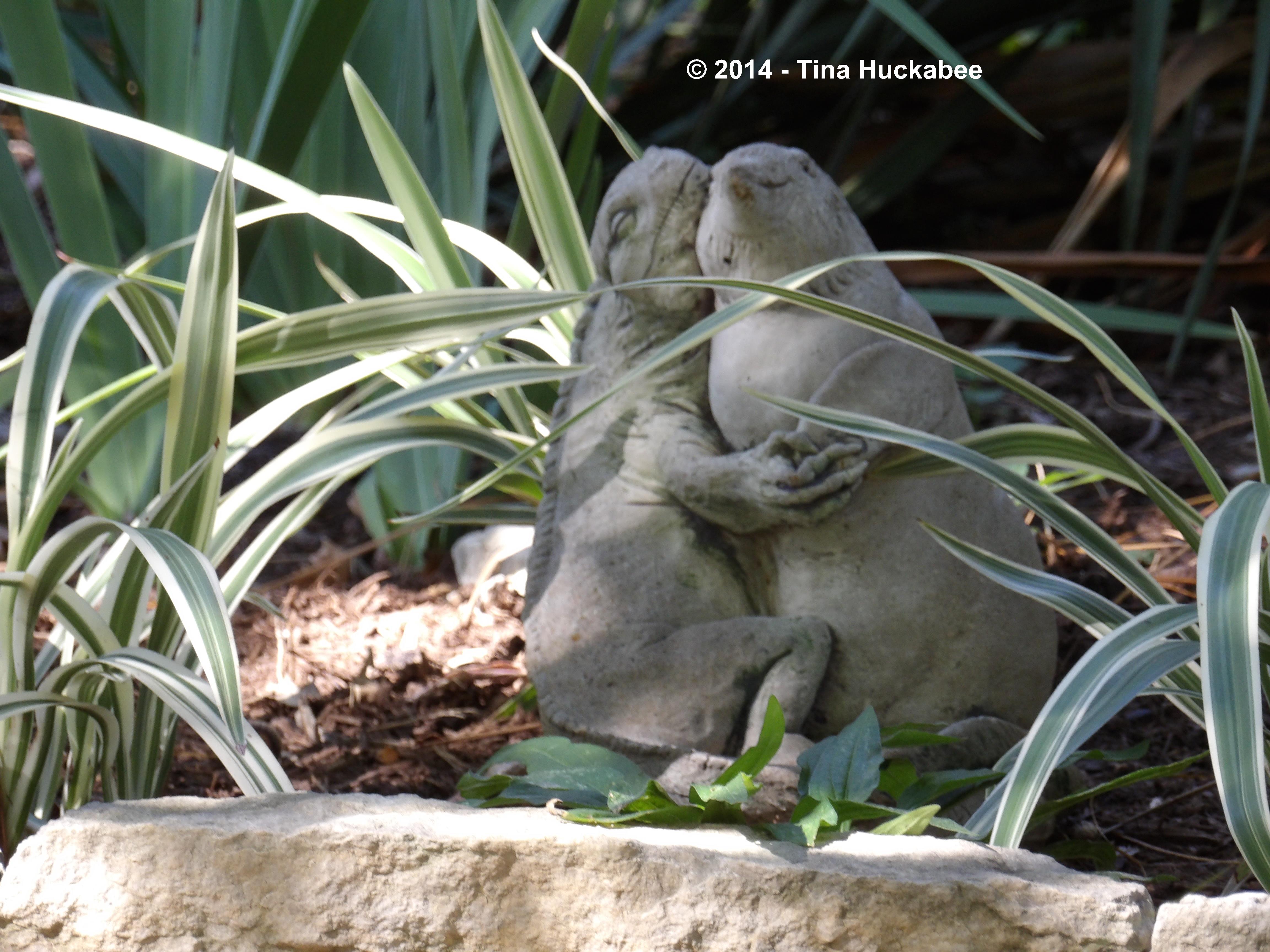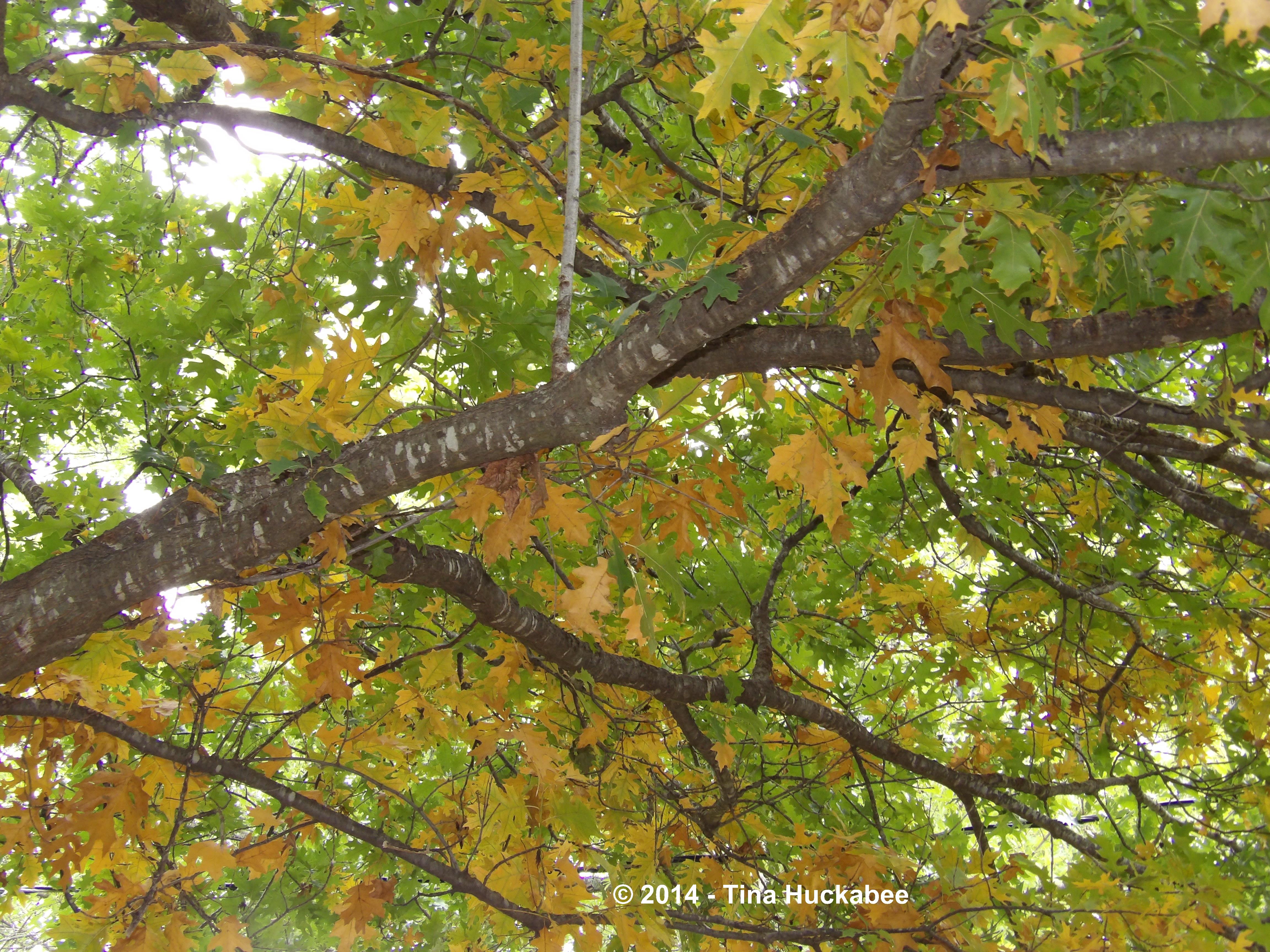I love this plant.
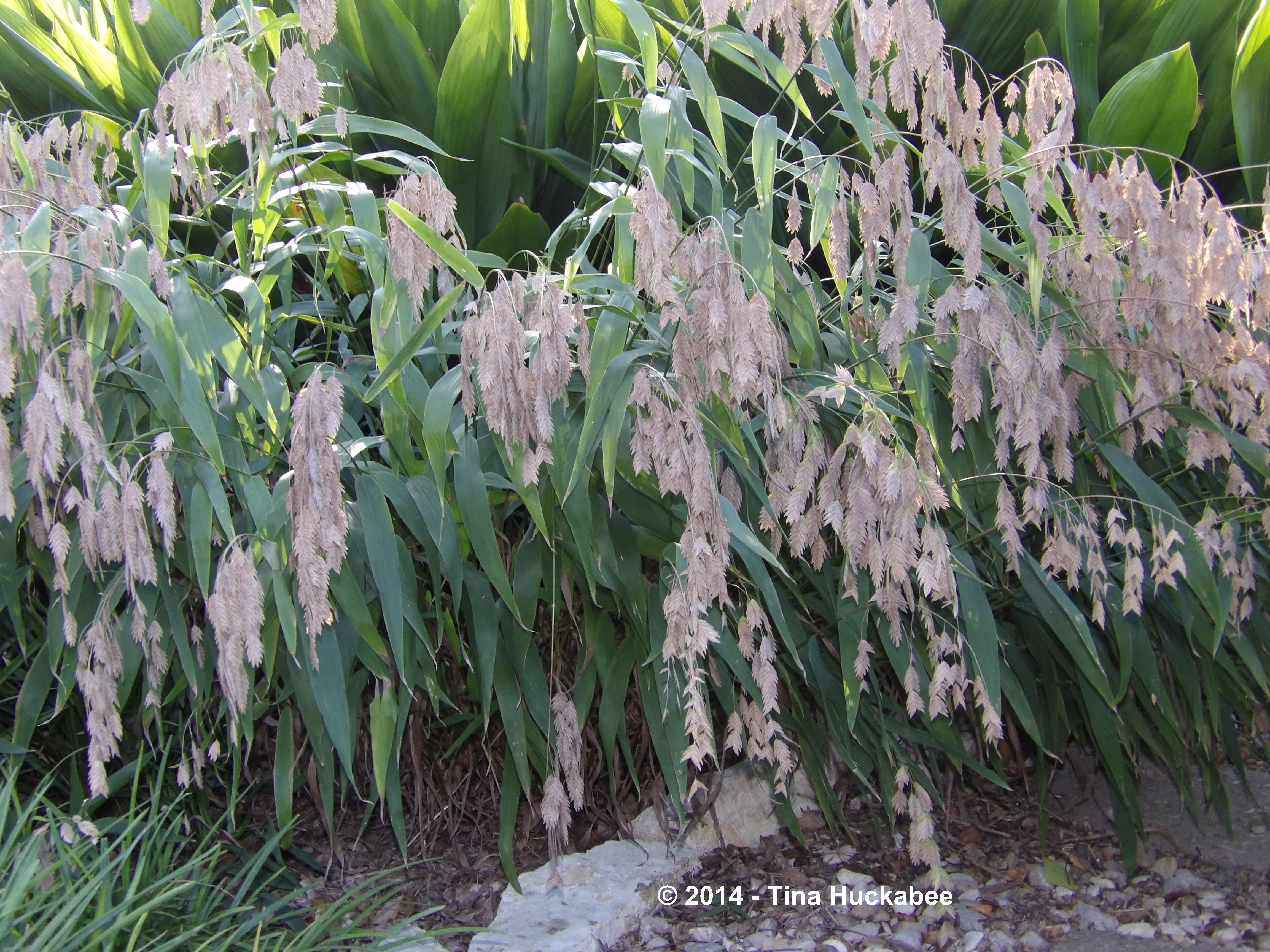
It’s a beautiful shade-loving grass, excellent for erosion control, prized by wildlife for cover and seeds, and a water-wise choice for gardeners.

Inland Sea Oats, Chasmanthium latifolium, is the go-to plant for so many difficult garden situations.



What’s not to love about that?
Native to a large swath of North America, this grass forms a dense cluster requiring little effort by gardeners throughout its growing season. Let’s take a look at how this valuable wildlife and landscape perennial performs throughout the year–A Seasonal Look for Inland Sea Oats.
Fresh, green stalks appear in late February or early March (in Austin, Texas) after winter dormancy and gardeners’ pruning shears. Those fresh, verdant shoots will emerge later if you live and grow further north.

I usually wait until I see the bright green sprouts of new growth from the basal clump before I cut back the previous year’s growth. However, one can prune before–it’s really a matter of aesthetics and available time. The dormant beige grass does get a bit tatty toward the latter part of winter so if that’s a problem for you whack away to the ground whenever the mood strikes!  Inland Sea Oats is attractive in winter, but it’s a good idea to plant it in companionship with evergreens,
Inland Sea Oats is attractive in winter, but it’s a good idea to plant it in companionship with evergreens,
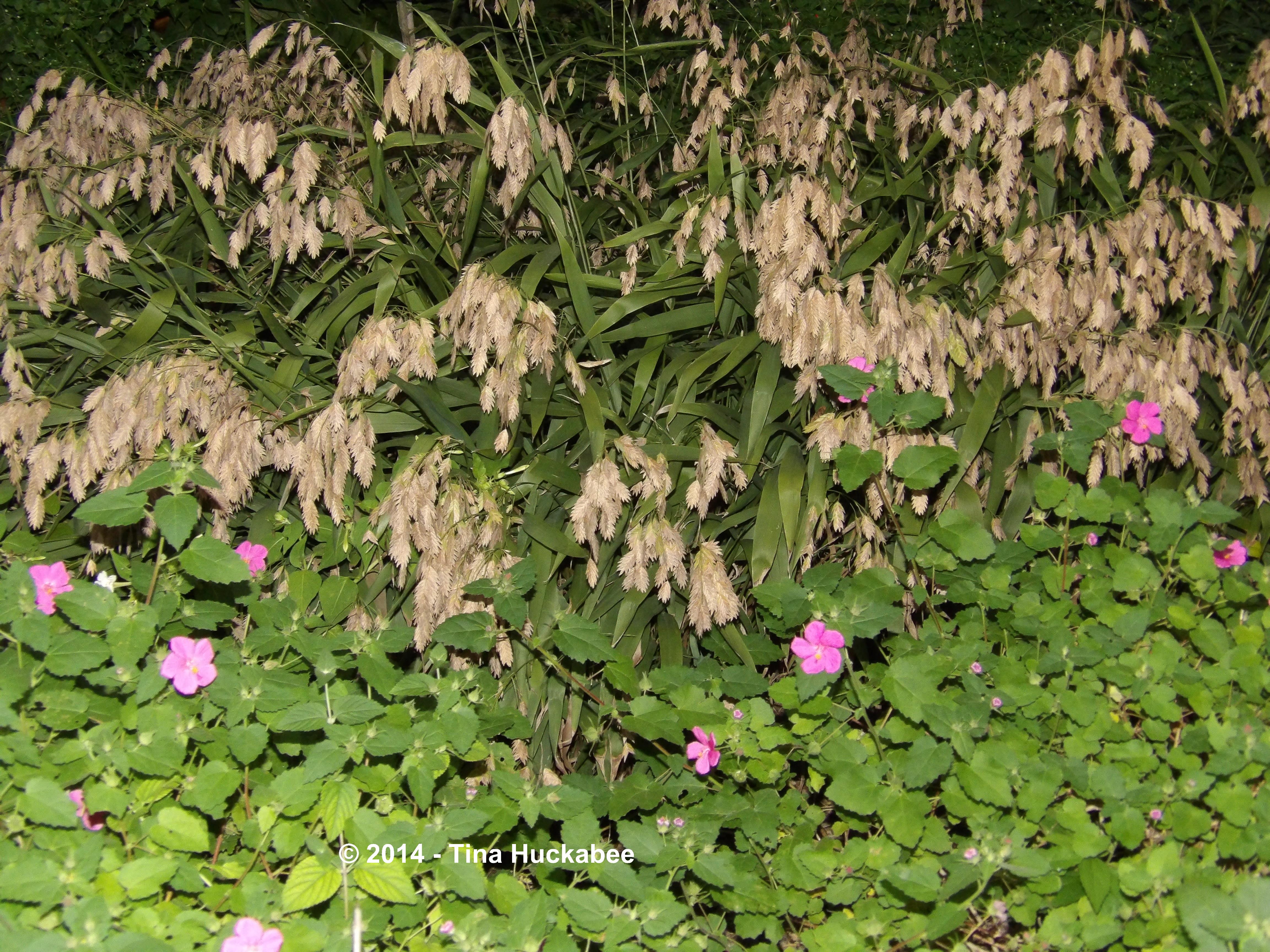


…just because it’s nice to have some botanical interest while the Oats are dormant.
During the spring months, Inland Sea Oats grow,

…and grow. The foliage reaches two-three feet in height. Seed heads develop in the late spring and early summer, adding texture and grace to the lovely grass foliage.
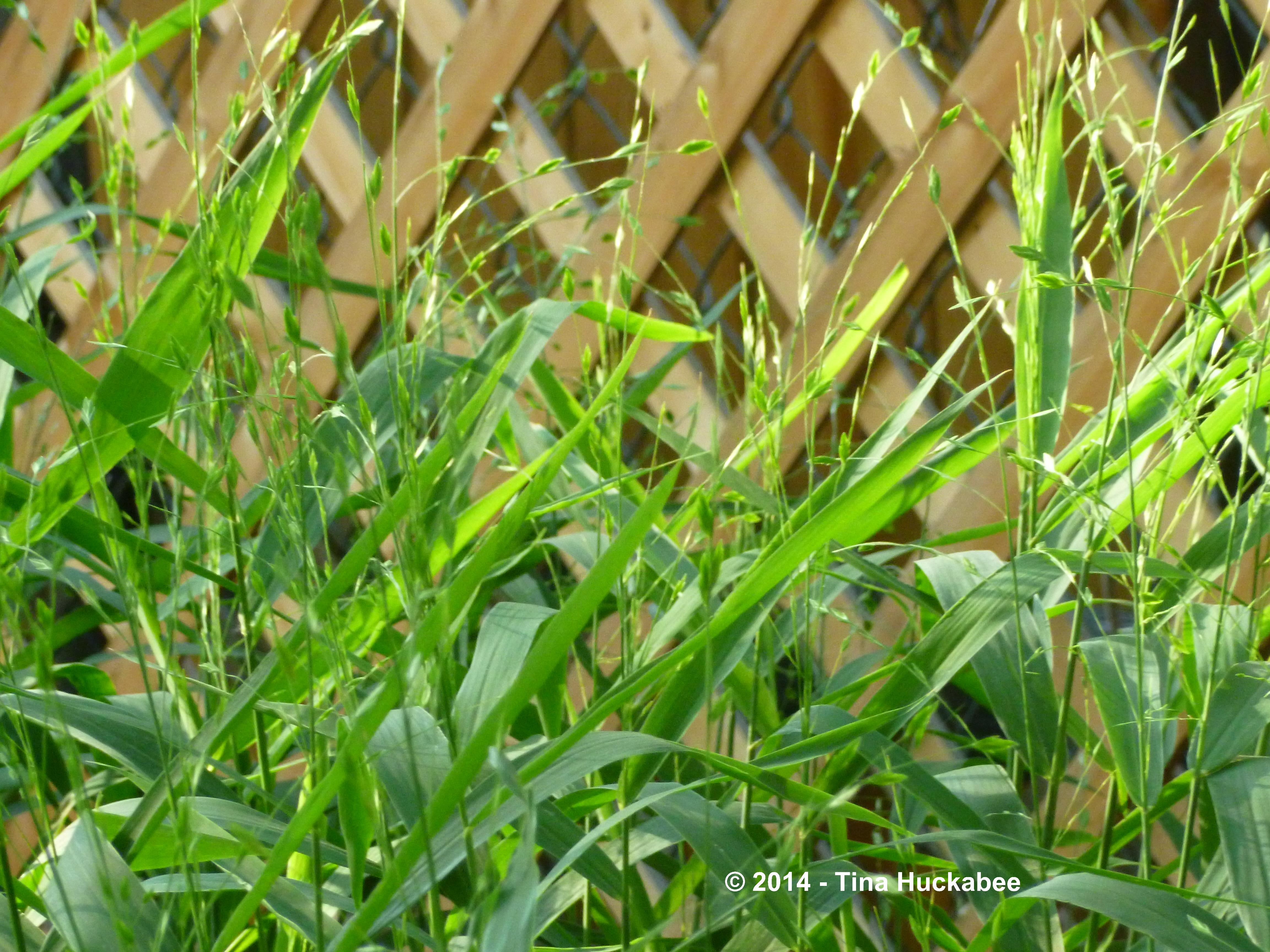
Through most of summer, the foliage and seeds share the same brilliant green coloring.




Elegant and lush during the hottest time of the year, Inland Sea Oats grass is drought-tolerant, requiring little irrigation. In my gardens, soaker hoses lie along the root zone of most, though not all of my Inland Sea Oats groups and receive irrigation once or twice/month. I grow several groups that receive no irrigation at all and they endure our long, hot summers just fine. In fact, it’s a greater problem if the Oats are over-watered. If watered regularly and year round, a greater percentage of Oats seeds will germinate, thus plenty of seedlings develop. This might be desirable in a spot where immediate erosion control is desired, but probably not for most home garden situations. I remove those seedlings which grow in unwanted places in my gardens,
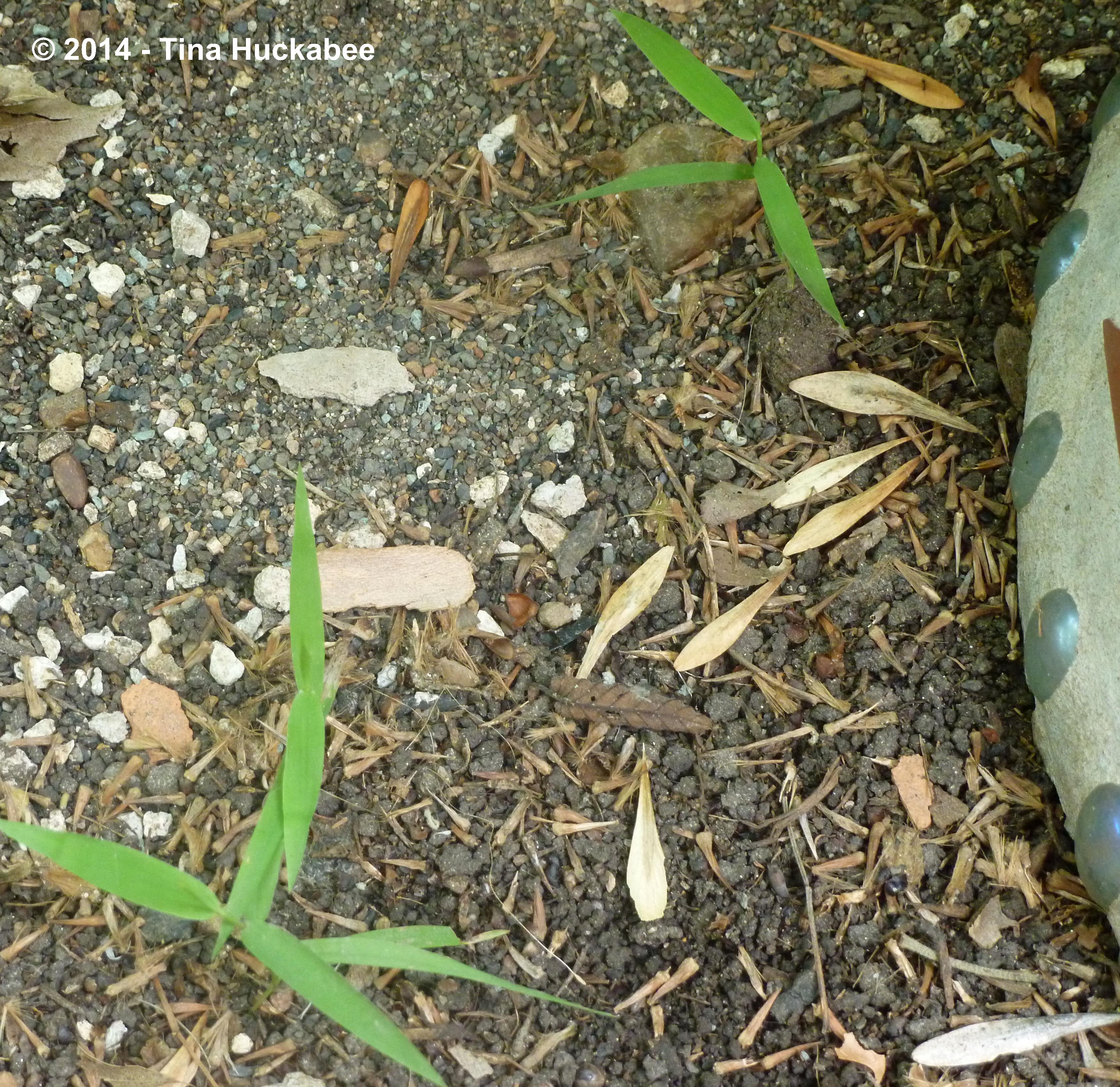
…but I haven’t found the Inland Sea Oats particularly troublesome to control. This grass tolerates a variety of soil types and transplants easily. Just recently, I separated and transplanted a group of three from another mature cluster into a spot which gets little direct sun.

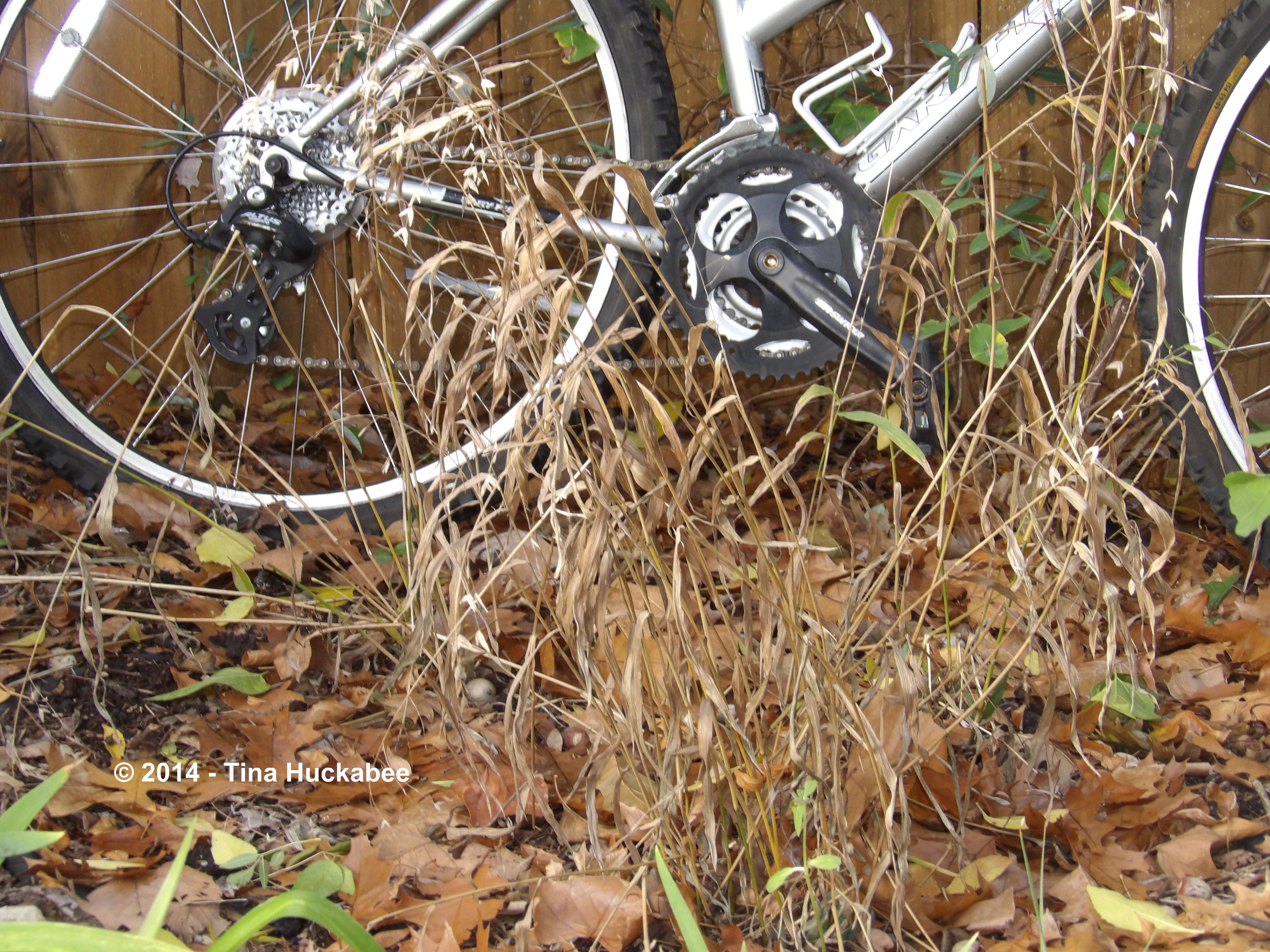
Peeky looking for now, they’ll return with full vigor in spring. Inland Sea Oats perform best in shade or part-shade. They tend to fry when planted in full Texas sun, though in northern latitudes, the sun isn’t quite so unrelenting. It’s good to have a lovely and reliable shade plant, so use it in those spots where many plants won’t thrive–you’ll always be happy with Oats in a shady spot. Beth at Plant Postings in Wisconsin recently profiled Northern Sea Oats (another common name) for her “plant of the month” choice. It’s always interesting visiting a garden with a different climate and soil composition to review how a plant fares. C. latifolium is as gorgeous and valuable in Wisconsin as it is here in Texas. It’s a fabulous grass for many places.

As summer wanes and the days shorten, the seeds of Inland Sea Oats transform from the their summer vivid green,

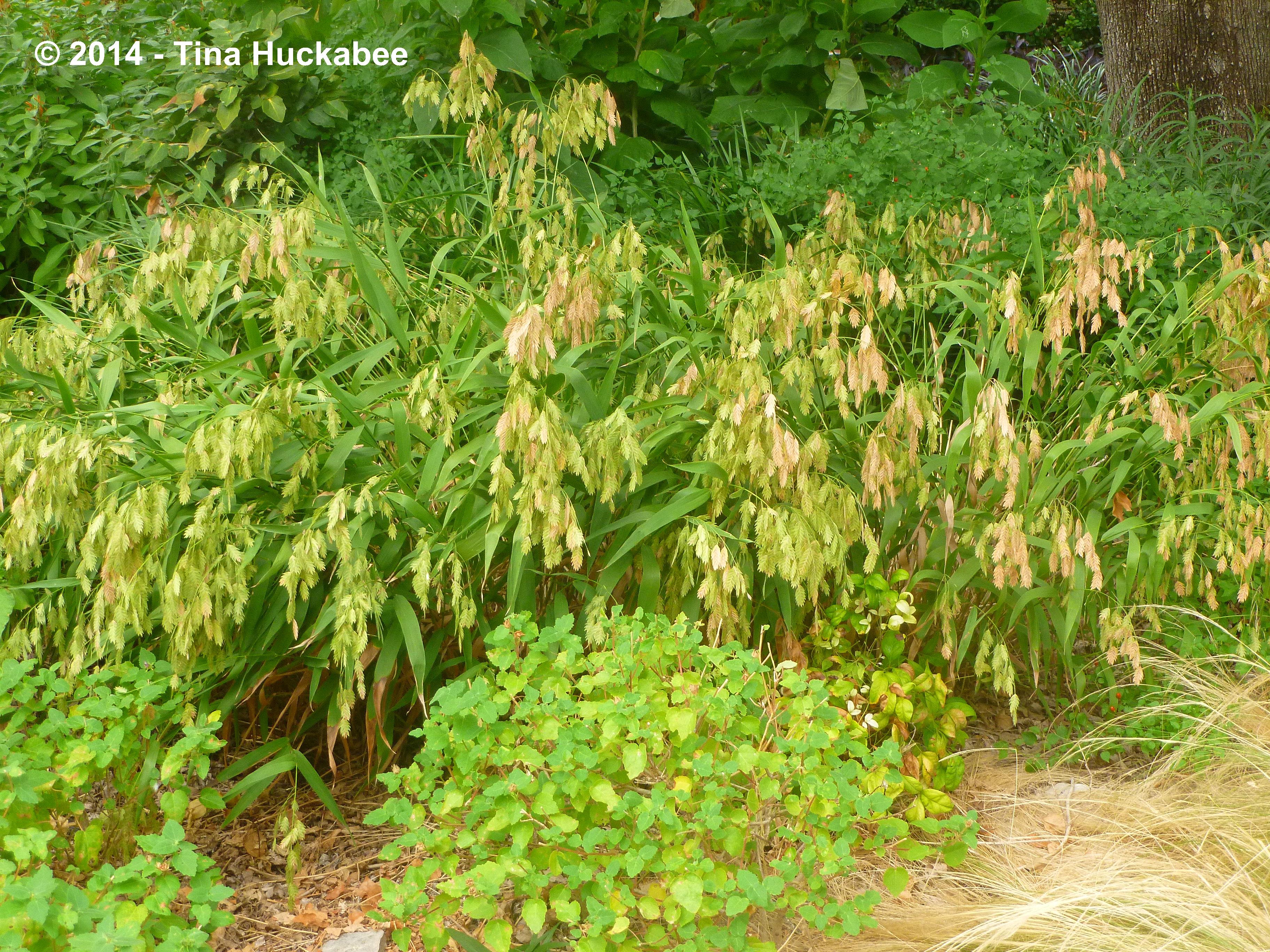
…to the autumn’s toasty beige.

I think my favorite part of that transition is during the actual color change,

–some seed heads are green and some are tan. It reminds me of a lizard in mid-transformation from green to brown. I really like that.
Once the seeds have morphed to autumn beige, Inland Sea Oats is even more striking in the garden.




Until a hard freeze ushers winter dormancy, the foliage remains green, though some yellowing of individual blades of grass is normal. Also in late fall/early winter, the seeds begin dispersal, either because of critter munching or seeds dropping. The seed heads end up as little inverted “Vs”s atop the grass blades.
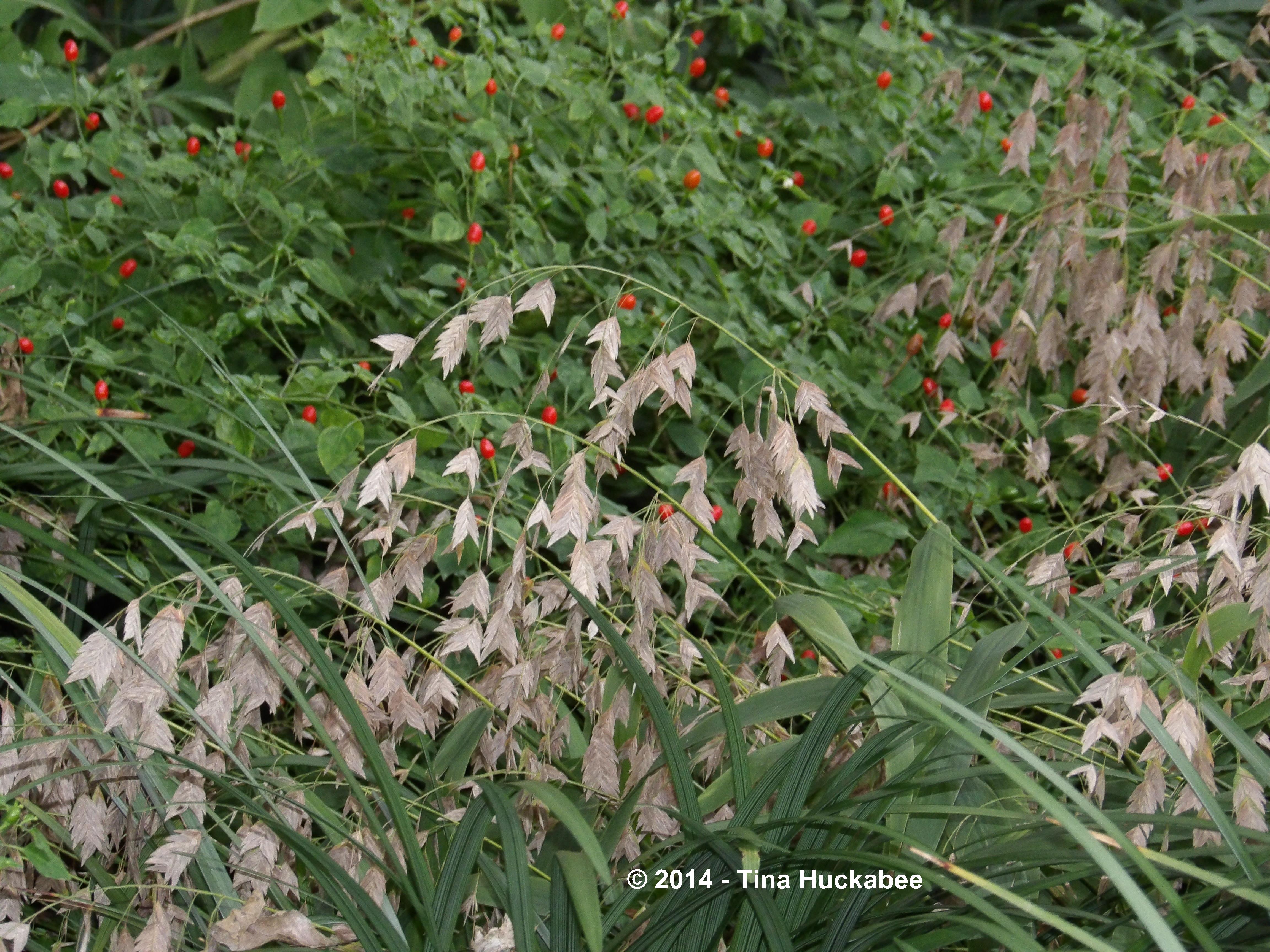
Inland Sea Oats has so many good qualities, besides its good looks and its water-wise and hardy nature. Highly deer resistant, (go eat something else, Bambi), it’s the host plant to several butterfly species. The stalks with the seed heads are also quite pretty in flower arrangements. I’m not one to pick flowers from my gardens for indoors, but on the rare occasions that I do, I always add some Inland Sea Oats to pop into the vase. Whether the seed heads are vivid green or tawny-tan, the stalks add beauty and interest to any flower arrangement.
So there you have it: a year in the life of the Inland Sea Oats. A grass that most gardeners (and their garden wildlife visitors) will enjoy.
Spring,


Summer,

Fall,

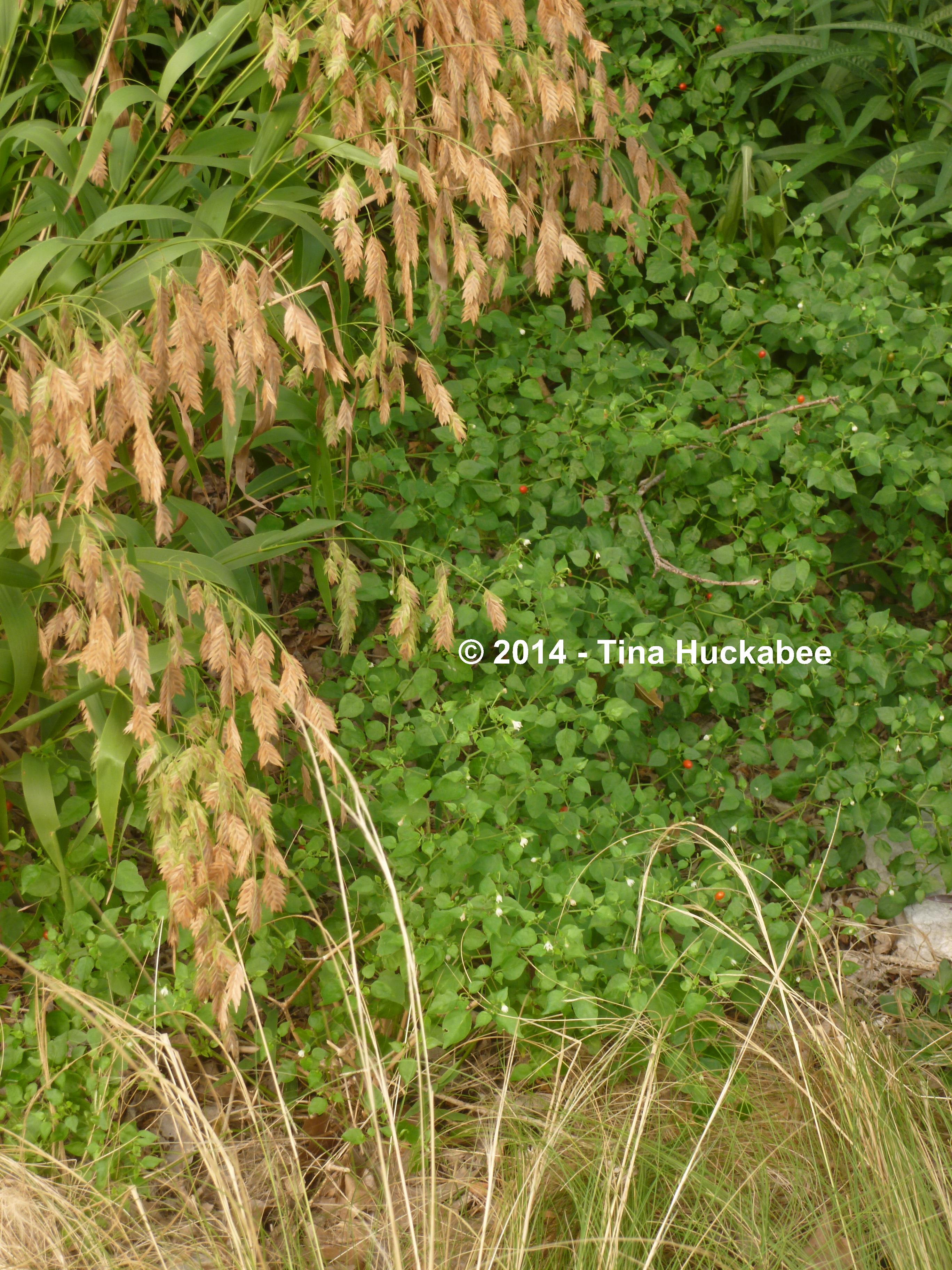
Winter.
